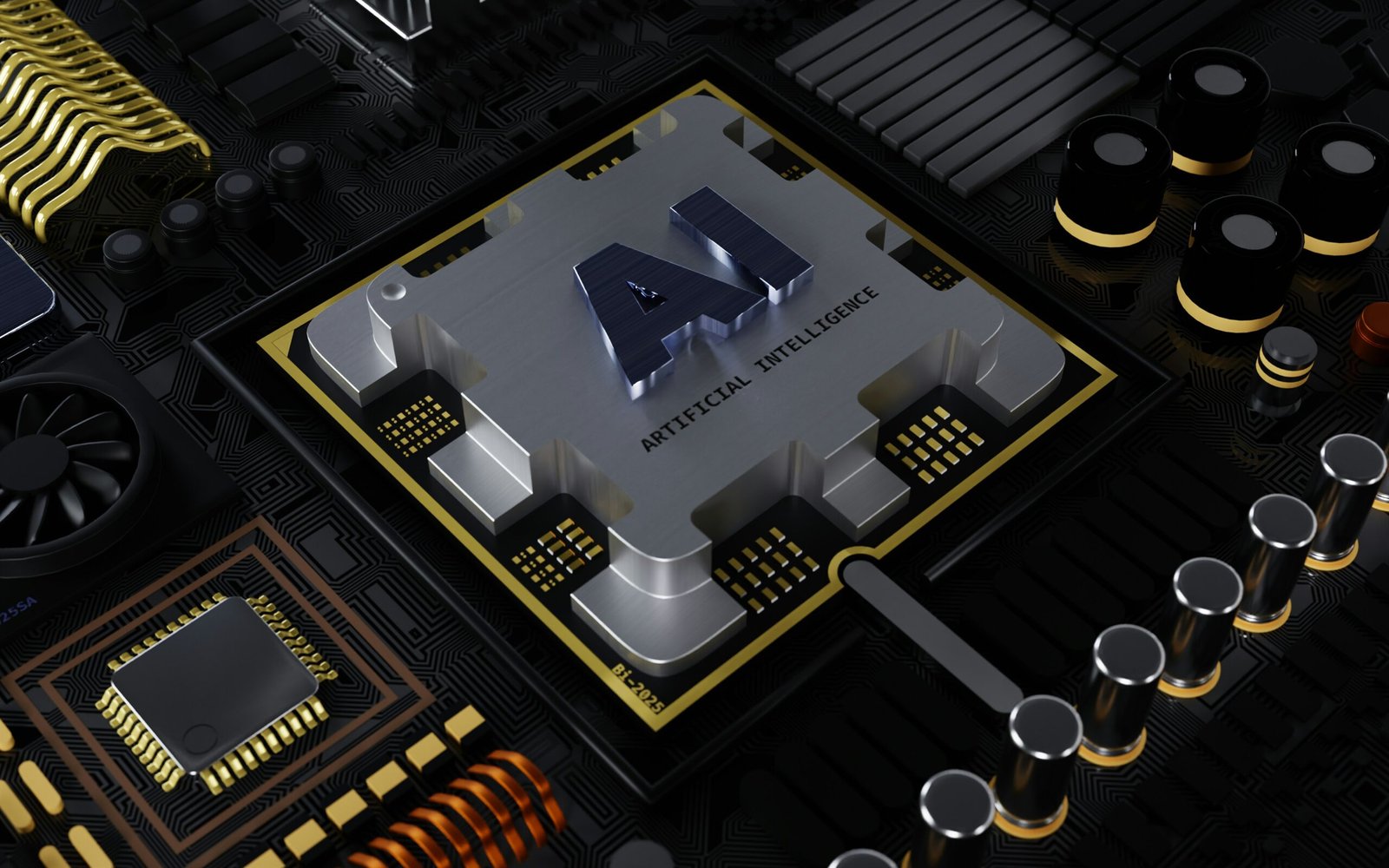 “`html
“`html
Introduction to Smart Cities
In recent years, the concept of smart cities has emerged as a quintessential solution to tackle the complexities of modern urban living. A smart city is defined as an urban area that employs information and communication technologies (ICT) to enhance its operational efficiency, share information with the public, and improve the quality of governmental services and citizen welfare. By integrating technological advancements into the urban fabric, smart cities strive to utilize limited resources effectively, reduce environmental impact, and create inclusive, aesthetically appealing living spaces for their residents.
Central to the smart city initiative is the objective of creating a more connected and responsive city infrastructure. This involves harnessing the power of data analytics, sensor networks, and Internet of Things (IoT) devices to monitor and optimize various urban activities. For instance, smart traffic management systems utilize real-time data to alleviate congestion, while smart lighting systems adjust street lighting based on pedestrian activity, thereby conserving energy. Such implementations of technology are designed to mitigate the rising challenges of urbanization – such as overpopulation, traffic congestion, pollution, and inefficient public services – all while enhancing the daily life experiences of the residents.
The significance of technology in resolving urban challenges cannot be overstressed. Whether it’s improving air quality, managing waste efficiently, or ensuring the security of public spaces, technology serves as the backbone of a smart city’s operation. Furthermore, the emphasis on technology aids in promoting sustainable development, thereby making cities not only smarter but also more eco-friendly. This transformative approach is geared towards fostering economic growth, ensuring social inclusivity, and bolstering environmental sustainability. As urban landscapes evolve, smart cities are poised to play a pivotal role in shaping the future of urban living through technological innovation and strategic planning.
The Role of IoT in Smart Cities
The Internet of Things (IoT) is a cornerstone in the development of smart cities, profoundly transforming urban living by enhancing infrastructure management, improving public services, and increasing overall efficiency. At its core, IoT involves the synchronization of multiple connected devices and smart sensors that collect and analyze data in real-time. This capability enables city administrators to make informed decisions, optimize resources, and respond swiftly to emerging issues.
One significant application of IoT in smart cities is in transportation management. For example, smart traffic lights equipped with sensors can adjust their timing based on real-time traffic conditions, reducing congestion and improving traffic flow. Moreover, connected public transit systems can inform commuters of delays, thus enabling better route planning and decreasing wait times.
Utilities are another domain where IoT showcases its potential. Smart grids utilize IoT to monitor and manage energy consumption efficiently, ultimately reducing energy waste and lowering costs. Additionally, smart water management systems can detect leaks and predict maintenance needs, thus conserving water and preventing large-scale infrastructure failures.
Public safety and emergency services benefit from IoT implementations as well. Connected surveillance cameras and sensors can monitor public spaces for unusual activities, aiding law enforcement in maintaining safety. Smart emergency response systems can also improve coordination among various agencies, ensuring faster and more effective responses during emergencies.
Several cities around the world exemplify the successful implementation of IoT. For instance, Barcelona has integrated IoT into its urban systems, using smart streetlights that adjust brightness based on pedestrian activity and sensors that monitor air quality to keep residents informed. Similarly, Singapore employs a comprehensive IoT ecosystem to manage everything from traffic to waste disposal, significantly enhancing urban living standards.
In sum, the role of IoT in smart cities is pivotal. Through the intelligent deployment of IoT technologies, cities can create more sustainable, efficient, and responsive environments, ultimately enhancing the quality of urban life for their residents.
Smart Transportation Systems
One of the hallmarks of smart cities is the revolutionary transformation of transportation systems through the integration of advanced technologies. At the forefront of these innovations is smart traffic management, which utilizes real-time data and predictive analytics to optimize traffic flow and minimize congestion. By leveraging sensors, cameras, and traffic signal algorithms, smart cities can efficiently manage traffic patterns, thus reducing travel times and enhancing urban mobility.
Ride-sharing platforms have also emerged as key components of smart urban transportation. By facilitating carpooling and connecting passengers with available drivers, these platforms reduce the number of vehicles on the road. This not only alleviates traffic congestion but also promotes a more sustainable use of resources. Moreover, the ease of accessing ride-sharing services through mobile applications enhances their appeal, making them a convenient alternative to traditional modes of transport.
In an effort to combat urban pollution, many smart cities are promoting the adoption of electric vehicles (EVs). With advancements in battery technology and the expansion of charging infrastructure, EVs are becoming more accessible and practical for urban residents. The shift towards electric mobility helps reduce greenhouse gas emissions and improves air quality in densely populated areas. Additionally, some smart cities are providing incentives such as tax breaks and preferential parking to encourage the use of electric vehicles.
Autonomous public transportation is another promising development within smart cities. Self-driving buses and shuttles offer the potential for increased efficiency and safety while reducing operational costs. By integrating autonomous vehicles into public transit systems, cities can provide reliable and consistent services, even in less densely populated regions where traditional public transport may not be viable. This technological advancement helps bridge the gap between urban and suburban connectivity, fostering greater inclusivity and access.
The combined impact of these smart transportation systems is profound. Reduced traffic congestion leads to lower pollution levels and improved air quality, while enhanced mobility options contribute to a more efficient and sustainable urban environment. By embracing these technological advancements, smart cities are setting the stage for a future where transportation is seamlessly integrated, environmentally friendly, and accessible to all residents.
Enhancing Public Safety and Security
Smart cities are leveraging technological advancements to enhance public safety and security, establishing a proactive environment where technology plays a critical role in safeguarding urban dwellers. One of the key elements utilized in this endeavor is the deployment of extensive surveillance camera networks. These cameras, equipped with high-definition capabilities and sophisticated software, provide constant monitoring and real-time data that law enforcement agencies use to keep communities safe.
Artificial intelligence (AI) has emerged as a pivotal tool in public safety, particularly through predictive policing. By analyzing vast amounts of data from various sources, AI systems can identify patterns and predict potential criminal activities before they occur. This method not only improves crime prevention but also optimizes the allocation of law enforcement resources, ensuring a more efficient and targeted approach to maintaining public order.
Furthermore, smart cities are revolutionizing emergency response systems. Advanced technologies allow for the integration of data from sensors, social media, and other digital platforms into emergency response frameworks. This integration facilitates quicker communication and coordination among various emergency services, resulting in rapid responses and minimized impact in critical situations. For instance, real-time traffic data can help ambulance services find the fastest routes to emergency scenes, significantly reducing response times.
Data analytics is another crucial component in enhancing public safety and security within smart cities. By processing and analyzing data from surveillance cameras, sensors, and various other sources, city officials can achieve real-time monitoring of urban environments. This capability enables quick identification and response to incidents, whether it’s a traffic accident, natural disaster, or criminal activity. Such real-time responses are vital in mitigating risks and protecting citizens.
In conclusion, the amalgamation of surveillance technology, AI-driven predictive policing, and advanced emergency response systems demonstrates the profound impact of technology on public safety and security. Smart cities are at the forefront of implementing these innovations, ensuring safer urban environments for their inhabitants through continuous monitoring, quick incident response, and efficient resource management.
Sustainable Energy Solutions
As urban centers continue to grow, the demand for sustainable energy solutions becomes increasingly vital. Smart cities are at the forefront of this transition, employing various innovative technologies aimed at reducing carbon footprints while simultaneously ensuring a reliable and efficient energy supply. A cornerstone of these initiatives is the implementation of smart grids, which mark a significant advancement in energy management.
Smart grids operate through an intricate network of digital technology that enables two-way communication between the utility and its customers. This level of connectivity allows for real-time monitoring and management of energy usage, which not only enhances the grid’s efficiency but also facilitates the integration of renewable energy sources. Solar, wind, and hydroelectric power are increasingly becoming part of the urban energy mix, owing to their environmental benefits and decreasing costs. These renewable sources are pivotal in minimizing dependency on fossil fuels, thereby reducing greenhouse gas emissions.
In addition to smart grids, energy-efficient buildings play a crucial role in driving sustainability in smart cities. Modern constructions are imbued with advanced insulation materials, energy-efficient windows, and smart lighting systems that adapt based on occupancy and natural light levels. Moreover, the integration of rooftop solar panels and green roofs further exemplifies these buildings’ commitment to sustainability. These initiatives collectively work towards lowering energy consumption and operational costs, which is beneficial not just for the environment but also for the residents and businesses that occupy these spaces.
Through the combined use of smart grids, renewable energy sources, and energy-efficient building technologies, smart cities are making significant strides in promoting sustainability. These efforts serve as a model for other urban areas seeking to achieve a balance between development and environmental stewardship. As technology continues to evolve, the potential for even more innovative solutions in urban energy management appears limitless, paving the way for greener and more resilient cities.
Smart Waste Management
Smart cities are increasingly turning to technology to address the perennial challenge of waste management. Central to this revolution are smart bins, which are equipped with sensors that monitor the volume of waste. These bins send real-time data to waste management authorities, thereby optimizing collection routes and schedules. This ensures that bins are emptied before overflowing occurs, significantly reducing littering and the associated public health risks.
Automated waste collection systems are another technological innovation employed by smart cities. These systems use underground pneumatic tubes to transport waste directly from residential or commercial areas to central collection points. This not only reduces the need for waste collection trucks on the streets, lowering traffic congestion and emissions, but also minimizes noise pollution and improves overall efficiency. Such systems are typically monitored and controlled via centralized software platforms that track the flow of waste, manage maintenance schedules, and predict system failures before they occur, ensuring uninterrupted service.
Recycling initiatives have also been invigorated through technological advancements. Smart recycling bins, much like smart waste bins, use sensors and IoT technology to identify the type of waste deposited. They can automatically sort items into appropriate categories, such as paper, glass, and plastics, facilitating more efficient recycling processes. Several smart cities have integrated incentive programs that reward residents for correctly segregating and disposing of recyclables, thereby promoting community participation and awareness in waste management practices.
The implementation of such smart waste management systems leads to cleaner urban environments, reducing the strain on landfills and enhancing resource recovery. It also provides valuable data that can be used for continuous improvement in waste management strategies, ensuring they evolve to meet the growing needs of urban populations. Advances in technology ensure that waste management in smart cities is not only efficient but also sustainable, contributing positively to the overall quality of urban living.
Citizen Engagement and E-Governance
Smart cities are increasingly leveraging technology to elevate citizen engagement and streamline government services. Through the implementation of digital platforms, residents now have unprecedented opportunities for civic participation, ensuring their voices are heard in the urban planning process. One of the most notable tools in this sphere is the mobile app or web platform, often referred to as a “citizen portal.” These portals facilitate direct interaction between residents and city officials, enabling users to report issues, provide feedback, and engage in local governance from the convenience of their smartphones or computers.
Digital government services have similarly transformed the landscape of urban management. E-governance platforms now offer a plethora of services that were traditionally time-consuming and cumbersome. From applying for permits and licenses to accessing public health information, these resources are designed to significantly reduce bureaucratic bottlenecks. For instance, the city of Barcelona has pioneered the “Decidim” platform, which allows citizens to participate in policy-making, budget allocation, and urban projects, propelling Barcelona as a leader in digital democracy.
Real-time communication is another cornerstone of modern e-governance. Smart cities use integrated communication channels, such as social media, SMS alerts, and dedicated hotline numbers, to ensure residents are kept informed about critical updates and emergency alerts instantaneously. The city of Singapore exemplifies this approach through its “OneService” app, which provides a seamless interface for reporting municipal issues and receiving prompt responses from the concerned authorities. This immediate feedback loop fosters trust and transparency between the government and its citizens.
In summary, the adoption of technology in citizen engagement and e-governance is fundamentally reshaping the relationship between urban dwellers and municipal bodies. These digital tools not only empower citizens to have a direct influence on their communities but also enhance the efficiency and responsiveness of government services. As cities continue to evolve, the integration of such technologies will undoubtedly play a pivotal role in promoting more inclusive and efficient urban environments.
Challenges and Future Outlook
The development and implementation of smart city technologies are not without significant challenges. One primary concern that consistently emerges is data privacy. With the widespread deployment of sensors, cameras, and other data-collecting devices, there is a growing unease about how personal information is collected, stored, and used. Ensuring robust data protection frameworks and fostering public trust is essential to mitigate privacy risks in smart cities.
Another critical obstacle is the high costs associated with deploying smart technologies. From initial investments in infrastructure to the ongoing operational expenditures, the financial burden can be substantial. Many cities face budget constraints, which can slow down the pace of smart city initiatives. Policymakers and urban planners must explore creative funding mechanisms, such as public-private partnerships and grants, to support the financial viability of these projects.
The digital divide also poses a significant challenge in the realization of smart cities. Not all residents have equal access to digital resources, which can exacerbate social inequities. Bridging this gap requires a comprehensive approach that includes improving broadband connectivity, offering digital literacy programs, and ensuring that smart city solutions are inclusive and accessible to all demographics.
Looking forward, the future of smart cities holds promising advancements. Emerging technologies such as 5G, Internet of Things (IoT), and artificial intelligence (AI) are poised to revolutionize urban living. These innovations can enhance real-time data analysis, improve service delivery, and foster more responsive and efficient municipal operations. Additionally, the integration of sustainable practices into smart city planning can further promote environmental stewardship and resilience.
The evolution of smart cities will likely see a greater emphasis on collaborative platforms and open standards, enabling seamless interoperability between different systems and fostering innovation. As cities worldwide continue to learn from one another’s successes and challenges, the ongoing exchange of knowledge will be pivotal in creating smarter, more livable urban environments for future generations.




